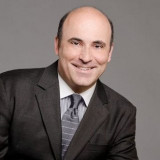The 38th rule of Court forbids the insertion of the whole of the
charge of the court to the jury in a general bill of exceptions,
but requires that the part excepted to shall be specifically set
out.
This Court has not the power to correct any errors or omissions
which may have been made in the circuit court in framing the
exception, nor can it regard any part of the charge as the subject
matter of revision unless the judges, or one of them, certifies
under his seal that it was excepted to at the trial.
If the omission of a part of the charge which was in fact
embraced in the exception is a mere clerical error, the party will
be entitled to a certiorari upon producing a copy of the exception,
properly certified.
But in no case can the exception certified under the seals of
the judges of the circuit court be altered or amended.
A suggestion was made in this case of diminution in the record,
and a motion for a certiorari to bring up the charge which the
court delivered to the jury on the trial of the cause in the
Circuit Court of the United States for the Eastern District of
Pennsylvania.
MR. CHIEF JUSTICE TANEY delivered the following opinion of the
Court.
The plaintiff in error in this case suggests that there is
diminution in the record in omitting the charge to the jury which
was delivered at the trial by the circuit court, and moves for a
certiorari that it may be set out at length and appended to the
record.
So much of the charge of the court as was excepted to at the
trial is inserted in the record as it now stands, and by the 38th
rule of this Court, adopted at January Term 1832, it was ordered
that thereafter,
"the judges of the circuit and district courts do not allow any
bill of exceptions, which shall contain the charge of the court at
large to the jury, in trials at common law, upon any general
exception to the whole of such charge. But that the party excepting
be required to state distinctly the several matters in law in such
charge to which he excepts, and that such matters of law, and those
only, be inserted in the bill of exceptions and allowed by the
court."
The record now before us contains as much of the charge as is
authorized by this rule to be inserted in the exception, and the
motion for a certiorari must therefore be overruled.
Page 44 U. S. 554
J. R. Ingersoll afterwards filed, and read in open court the
following suggestion in writing, to-wit:
"In the printed record, a mere omission is made of a portion of
the manuscript charge. 1. After the reference to
Evans v.
Jordan, 9 Cranch 201, printed record, 30, near the
bottom of the page, there are four and a half pages of manuscript,
pages 26, 27, 28, 29, 30. 2. On page 27 of the manuscript are these
words:"
" It thus appears that the act of 1839 goes only one step beyond
those of 1832 and 1836, and is a dead letter, if it protects the
person who has purchased, constructed, or used the machine
invented,"
"A memorandum endorsed by Judge Baldwin 'Stimpson v. West
Chester Railroad Company. Exceptions to the charge.' In this
memorandum are found the following words: '7 sec. act of 1839 goes
only one step beyond those of 1832 and 1836, and is dead letter so
far as protection against such subsequent use.'"
"3. On page 30 of the manuscript charge are these words:"
" In the case before us, it clearly appears that the defendants
constructed their railroad with the plaintiff's curves, in 1834,
one year or more before the plaintiff's application for his renewed
patent, consequently they may continue its use without liability to
the plaintiff."
"The same memorandum, endorsed by Judge Baldwin contains these
words: 'As defendants made railroad in 1834, they may continue
use.'"
"Thus it will be perceived the very points objected to in
writing, and the writing received and admitted to be such by Judge
Baldwin are omitted in copying the charge at the clerk's office at
Philadelphia. The language of the charge, as written out, is
somewhat more extended than that of a memorandum hastily made while
it was delivered, but it is, throughout, substantially, and in part
literally the same."
"The 'important question' in the case was the defendants' right
to use, after the date of the second patent, the specific machine
constructed and used by them before the date of that patent. This
question, according to the printed record, is not decided at all,
nor left to the jury, nor any result arrived at in regard to
it."
"The whole charge is not wanted, but only those parts distinctly
excepted to at the moment and inadvertently omitted by a
copyist."
"It is obvious besides that the charge, or the fragment of a
charge printed, is not only elliptical, but insensible. The judge
says (p. 30), 'Another important question,' &c., yet no
question appears. The manuscript must be consulted in order to give
meaning or object to the phrase."
"The counsel for the defendant in error would probably learn
with some surprise that this application has been refused. In the
paper book which that counsel has caused to be printed, page 3,
third paragraph, the 7th section of the act of 1839 is quoted, and
supported
Page 44 U. S. 555
by points and references. All this is without object or origin
in the printed record. The source of it is dried up by the omission
of the copyist. So page 4 of that paper book, No. 6, 'under the act
of 1839 &c.' These remarks are applicable only to the omitted
parts of the charge."
"The counsel for plaintiff in error, who now moves for a
certiorari, was not present at the trial, but his colleague, who
tried the cause, informs him that the judge undertook to put the
whole charge on the record, and the concluding words along with it.
Thus,"
"1. The whole charge, under the promise of the judge, ought to
be a part of the record."
"2. The omitted parts in the printed record are the essence and
substance of the case, admitted by the judge to be such, and
specifically excepted to at the moment."
"3. The whole difficulty arises from a mere inadvertence of a
clerk."
"4. Extreme injustice will be done if the clerical omission be
not corrected."
"5. Were the judge living, verbal explanations might be given by
him, but not more precise perhaps than the written endorsement or
the memorandum of counsel."
"Finally, the printed record shows that the judge put the case
on two points:"
"First, was the second patent void?"
"The judge decided that it is."
"Secondly, if the second patent were not void, then can the
plaintiff recover when the specific machine used by the defendants
was first made and used by them before the second patent was taken
out?"
"This second point, according to the printed record, the judge
states, but does not decide or put in such shape as to let the jury
decide. His conclusion is omitted, while his premises are stated.
And a correction of this is the subject of the certiorari. Mr.
Ingersoll then moved the Court for a writ of certiorari to be
directed to the judges of the Circuit Court of the United States
for the Eastern District of Pennsylvania, commanding them to
certify forthwith whatever errors and omissions shall be
found."
Upon which motion, MR. CHIEF JUSTICE TANEY delivered the opinion
of the Court.
A motion was made at a former day of the present term for a
certiorari to bring up the charge delivered by the circuit court at
the trial, to be set out at length and appended to the record. This
motion was overruled for the reason then stated by the Court.
The motion has since been revived, and a copy of what purports
to have been the charge of the court at length has been produced in
order to show that a material point in it has not been inserted in
the
Page 44 U. S. 556
exception as brought up in the record, and some memorandums in
the handwriting of the late presiding judge of the circuit court
have also been laid before this Court for the purpose of showing
that an exception was reserved to the part of the charge above
referred to.
In relation to the exception stated in the record, the Court
think it proper to say that it contains a great deal of argument
which is altogether out of place in an exception, and contrary to
the directions of this Court as given in the 38th rule. And it
would appear from the copy of the charge produced in support of
this motion that while much of the argument of the circuit court
has been improperly inserted, the matter of law which the argument
was intended to prove, and upon which the jury were instructed, is
omitted. But this Court has not the power to correct any errors or
omissions that may have been made in the circuit court in framing
the exception; nor can we regard any part of the charge as the
subject matter of revision here unless the judges, or one of them,
certifies under his seal that it was excepted to at the trial. If
the portion of the charge in relation to which the diminution is
suggested was in fact embraced in the exception, and the omission
of it is a clerical error, then, upon producing here a copy of the
exception properly certified, the plaintiff in error will be
entitled to a certiorari in order to supply the defect. But we can
in no respect alter or amend the exception certified under the
seals of the judges of the circuit court, either by referring to
the charge at length or the notes of the presiding judge, and as
the case is now presented, the motion must be
Refused.




